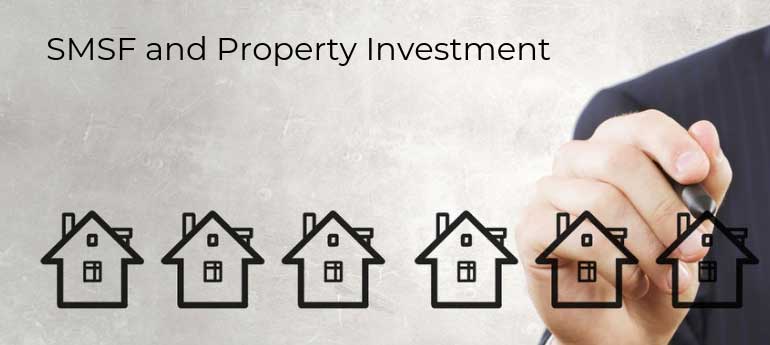Investing in property through a Self-Managed Super Fund (SMSF) offers a strategic pathway for growing wealth over the long term. By using your SMSF to purchase property, you can build a substantial portfolio to fund your retirement. However, SMSF property investment comes with distinct rules, opportunities, and risks that require careful planning and a clear strategy. In this expanded guide, we dive deeper into the dos and don’ts of buying property within your SMSF to ensure that you make well-informed and prudent decisions that align with your retirement objectives.
Do Focus on Long-Term Growth – Not Just Cash Flow
When investing in property via an SMSF, it’s critical to prioritize long-term capital growth over immediate cash flow. Although rental yield plays an important role in helping you cover holding costs, such as mortgage repayments and maintenance fees, the real wealth-building potential of property lies in its appreciation over time.
Focusing solely on properties with high rental yields, especially those in high-risk areas, can expose your SMSF to significant risks. For example, mining towns might offer strong short-term rental yields due to demand driven by local industries. However, these areas are subject to volatility tied to global commodity prices, making them highly susceptible to declines in value once demand drops. Similarly, properties in areas with no substantial prospects for long-term growth could fail to appreciate in value over time, leaving your SMSF with underperforming assets.
Instead, consider investing in areas with a strong track record of consistent property value growth. Look for regions that demonstrate solid economic fundamentals, such as population growth, job creation, and infrastructure development. These areas offer a higher probability of sustained growth, creating long-term value for your SMSF’s portfolio.
Learn more about how to build a long-term SMSF property strategy.
Do Use Data, Trends, and Statistics for Informed Decision Making
The property market can often feel like a maze of uncertainty, but using data, trends, and statistics provides a clearer path forward. Avoid making investment decisions based on intuition, rumors, or popular “hot tips.” Instead, leverage objective data and research to guide your SMSF property purchases.
Key factors to consider include:
- Days on Market (DOM): A low DOM indicates strong demand for properties in the area, reflecting a competitive market.
- Vacancy Rates: Low vacancy rates suggest that rental properties are in high demand, reducing your risk of having an empty property for long periods.
- Inventory Levels: Low inventory points to limited supply, which can drive prices higher due to competition.
- Rental Yield Trends: Rising rental yields show that demand for rental properties is increasing, making it a good sign for future investment.
Beyond short-term data, you should also pay attention to long-term indicators that influence property value growth:
- Population Growth: Areas experiencing population increases tend to see rising demand for housing, pushing property values up.
- Economic Drivers: Look for areas with solid employment prospects, government infrastructure investments, or new businesses entering the market, all of which create a healthy environment for property growth.
- Gentrification: In areas undergoing gentrification, where old properties are being renovated and the neighborhood is improving, property values can appreciate significantly.
By combining both local micro and broader macroeconomic data, you can build a comprehensive picture of the investment potential in any given area.
Do Focus on Properties with Development Potential
Properties with development potential offer SMSF investors the opportunity to unlock added value through future improvements. Rather than purchasing fully developed properties, consider those that have the potential for subdivision, renovation, or additional dwellings. Properties that can be developed or upgraded are more likely to yield higher returns, especially in growth areas where infrastructure is expanding or zoning laws are favorable for development.
For example, a large residential block in a growing suburb might not be valuable immediately, but it could significantly increase in value if rezoned or developed into additional dwellings. Alternatively, you might purchase a property with the intention of adding an extra room, granny flat, or garage, which can lead to higher rental yields and overall capital growth.
Before making a purchase, it’s important to consult with urban planners, architects, or property developers to understand the potential for development and ensure that all changes comply with local zoning laws and regulations. Development potential can turn an average property into a high-performing asset, making it a great strategy for SMSF investors seeking both income and growth.
Do Consider the Rental Yield Alongside Capital Growth
While capital growth should always be the focal point of your SMSF property investment strategy, it’s equally important to assess the rental yield. A property that produces enough rental income to cover holding costs is essential for the financial health of your SMSF. Without sufficient rental income, you might be forced to draw funds from the SMSF, potentially affecting the performance of other investments in the fund.
That being said, avoid properties with inflated rental yields but low growth potential. Areas with high yields often come with increased risk—either from low long-term growth or from issues like tenant turnover or property management problems. Ideally, your SMSF should invest in properties that strike a balance between both strong rental yield and long-term capital growth.
For example, areas with affordable entry prices and rising rents due to growing demand can provide both immediate income and long-term capital appreciation. The right property should not just offer a steady cash flow but also the potential for significant appreciation as the area continues to evolve.
Do Focus on Suburbs with Established Demand
Investing in properties in suburbs with established demand reduces risk and provides a more predictable growth trajectory. Areas with a proven track record of strong demand, stable rental markets, and consistent property price increases are less prone to the fluctuations that can affect newer or less established areas.
On the other hand, investing in areas with unstable or unpredictable demand could leave your SMSF with properties that struggle to maintain value. Avoid areas where demand is artificially inflated by short-term events, such as a mining project that will soon end, leaving behind a glut of vacant properties once the workers leave.
Look for areas with strong tenant turnover, stable local economies, and growth drivers like new infrastructure projects or government investments. These areas tend to experience consistent demand, providing a stable foundation for both short-term rental yields and long-term growth.
Do Set Realistic Expectations
Investing in property through your SMSF is a long-term commitment, and the growth of your portfolio should reflect that. Property prices and rental income don’t tend to skyrocket overnight; they increase steadily over time. It’s important to set realistic expectations, understanding that returns on investment might take years to fully materialize.
You may encounter periods of slow growth or market downturns. However, with careful planning and a sound investment strategy focused on long-term growth, your portfolio will likely recover and outperform other asset classes in the long run. By holding your investments over time, you benefit from compounded capital growth and rising rental yields, which can result in a sizable nest egg for your retirement.
Don’t Buy in Cold Suburbs or Areas Without Immediate Market Pressure
Avoid purchasing properties in cold markets—areas where there is little or no demand for housing. A property might appear to be a great deal at the right price, but if it’s in a cold suburb with low demand, it will be much harder to sell or lease, and the value may stagnate for years.
Cold markets often lack the economic drivers that push property values up, such as job creation, infrastructure projects, or population growth. Rather than relying on price drops and market bargains, focus on areas with strong immediate market pressures, such as rising rental yields or high demand for housing.
Buying into a growing market with both strong demand and limited supply is a safer bet, as it provides both immediate and long-term value growth.
Do Not Buy in the “Hotspots” You See Online
“Hotspot” listings often promise high growth potential but can be misleading. These areas may have already experienced substantial growth, leaving limited room for further appreciation. Often, these hotspots are marketed by individuals or organizations who stand to benefit from attracting investors to the area, making them less reliable indicators of long-term potential.
Instead of chasing these overhyped locations, do your own research. Look for emerging markets that have not yet been recognized as hotspots but show strong signs of future growth. Use data-driven insights, and avoid basing your decisions on trendy areas or social media posts.
Don’t Buy Risky Investments Like NDIS, Rooming Houses, or Commercial Properties Rented Back to Your Business
Certain types of property investments, such as National Disability Insurance Scheme (NDIS) properties, rooming houses, or commercial properties leased back to your own business, might seem appealing at first glance, but they come with higher risks and potential complications that should not be underestimated.
NDIS properties can seem like a stable investment due to the guaranteed income streams from the government. However, the market is heavily regulated, with long waitlists for tenants and the potential for vacancies that are difficult to predict. Furthermore, properties designed for disabled tenants may require modifications that could limit the property’s appeal and resale potential.
Rooming houses and commercial properties rented back to your own business present unique risks as well. Rooming houses often involve higher maintenance costs, more management challenges, and lower resale value. Commercial properties leased back to your business can reduce marketability, as potential buyers may be wary of the dependency on one tenant—your business.
Always conduct thorough due diligence, including financial assessments, market research, and consultations with industry experts before committing to these riskier types of property investments.
By following these dos and don’ts, you can navigate the complexities of SMSF property investment with greater confidence and reduce the risk of making decisions that could harm your retirement savings. Your SMSF property investments, if chosen wisely, can become powerful wealth-building tools for your future.




